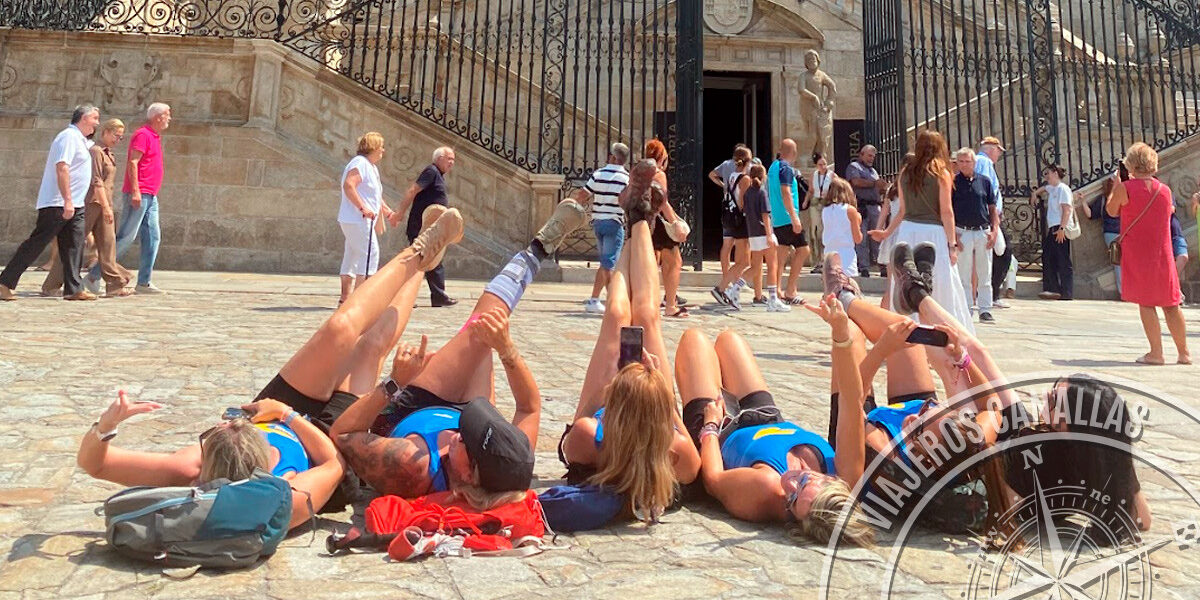History and meaning of the Camino de Santiago: more than just a pilgrimage
The Camino de Santiago is neither a hiking route nor a travel fad. It is an ancient tradition steeped in history, spirituality and symbolism that has transformed the lives of millions of people. Walking to Compostela means following in the footsteps of pilgrims from all over the world who, for centuries, have been looking for more than just a destination: they are looking for a life experience.
The origins of the Way of Saint James
The history of the Way begins in the 9th century. According to tradition, the tomb of the apostle James the Greater, one of the twelve apostles of Jesus Christ, was discovered in Galicia. According to Christian tradition, after the death of Jesus, James preached in the Iberian Peninsula. He returned to Jerusalem, where he was martyred around the year 44 AD. His disciples are said to have taken his body back to Galicia, where he was buried in secret.
The legend of discovery
In the year 813, a hermit named Pelayo (Paio) saw mysterious lights (stars) in a forest in Galicia, on Mount Libredón. Bishop Teodomiro of Iria Flavia investigated and found a tomb with human remains. It was believed to be those of the Apostle St. James.
The place was called Campus Stellae (Field of the Star), the origin of the name Compostela. King Alfonso II the Chaste recognised the discovery and made a pilgrimage there, thus beginning the pilgrimages to Santiago de Compostela.
This discovery made Compostela a centre of Christian pilgrimage that soon equalled Rome and Jerusalem in importance.
During the Middle Ages, thousands of people crossed Europe on foot to reach Santiago, leaving a legacy of churches, monasteries, hospitals and bridges that still mark the routes today. These roads were not only routes of faith, but also of cultural and economic exchange between regions.
The Way as a World Heritage Site
With the passing of time, the Way lost its strength, but from the 20th century onwards it regained prominence. Today, it is recognised by UNESCO as a World Heritage Site and declared a European Cultural Route by the Council of Europe.
Its value goes beyond the religious: the Camino is a living memory of centuries of history, art and architecture. Pilgrims do it for different reasons: spiritual, cultural, sporting, social and emotional.
Spiritual and personal meaning
Although it began as a Christian pilgrimage, today the Camino is experienced in many ways. Some do it for faith, others for adventure, sport or even as a personal retreat. What unites all pilgrims is the search for something deeper:
Inner connection, by walking for days on end in silence or reflection.
Connection with nature, enjoying landscapes that change at every stage.
Connecting with others, sharing stories, meals and friendship with people from all over the world.
The Camino is a metaphor for life: every step matters, every obstacle teaches and every arrival is celebrated.
More than a goal, a transformative journey
Arriving at the Cathedral of Santiago and embracing the apostle is a special moment, but for most pilgrims the real treasure is in the journey. The conversations, the silences, the overcoming of limits and the freedom to live with the essential make the Camino an experience that marks you forever.
Conclusion
The Camino de Santiago is history, culture, spirituality and human encounter. It is much more than a pilgrimage: it is a transformative journey that reminds us that life, like the Camino, is enjoyed step by step.
Bon Camino, pilgrim!
Frequently Asked Questions (FAQs)
1. When does the history of the Camino de Santiago begin?
In the 9th century, after the discovery of the supposed tomb of the apostle St. James in Galicia.
2. What is the legend of the discovery of the Camino?
In the year 813, the hermit Pelayo saw lights on Mount Libredón; the remains attributed to Santiago were found there.
3. Why is it called Compostela?
From the Latin Campus Stellae ("Field of the Star"), after the lights that led to the discovery of the tomb.
4. Why was it important in the Middle Ages?
Because it became one of the three great centres of Christian pilgrimage, along with Rome and Jerusalem.
5. What international recognition does the Camino have?
It is a UNESCO World Heritage Site and a European Cultural Itinerary by the Council of Europe.
6. What is the spiritual significance of the Camino today?
Beyond the religious aspect, it is a space for inner connection, with nature and with other pilgrims.
7. What does the Camino de Santiago symbolise?
It is a metaphor for life: every step counts, every obstacle teaches and every arrival is celebrated.
8. Which is more valued, the destination or the journey?
Although arriving at the Cathedral is exciting, most pilgrims emphasise that it is the journey itself that is transformative.
